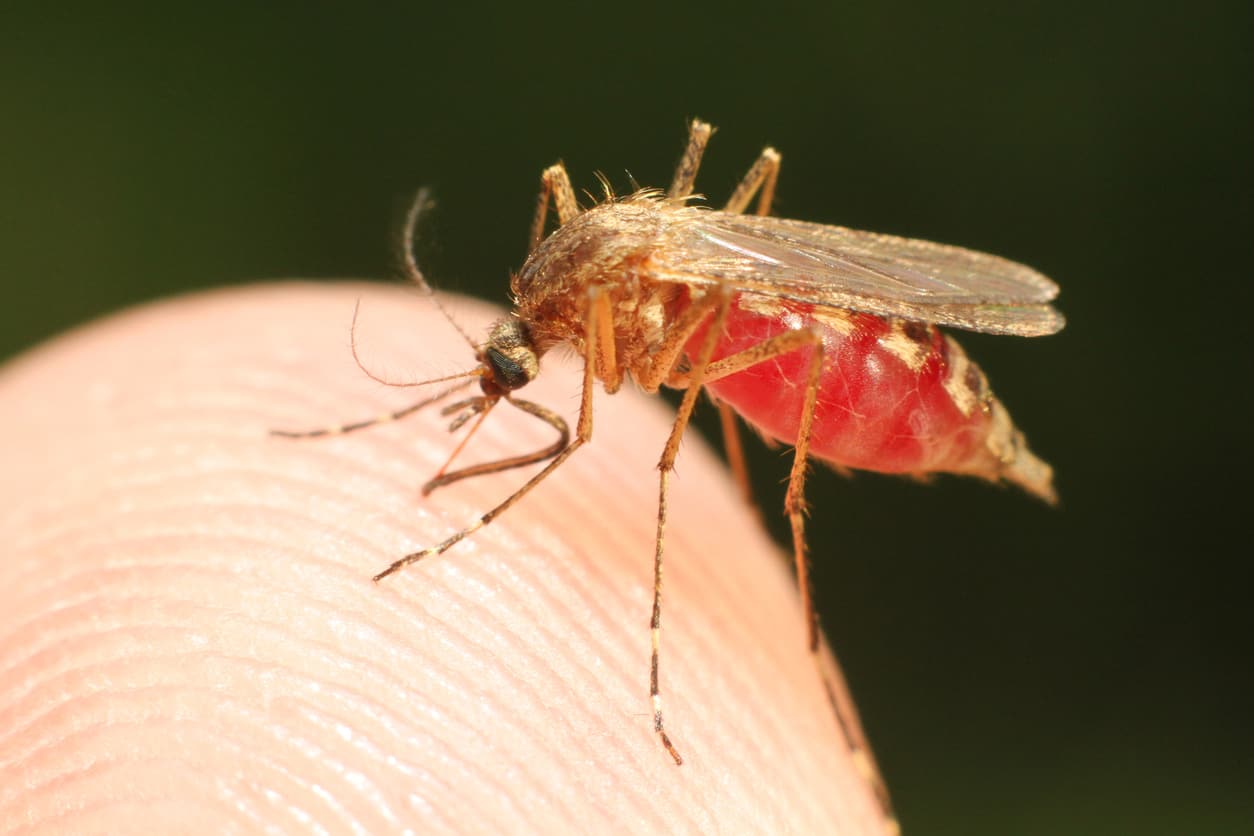WNV in Ohio Horses: 14 New Cases Confirmed

On Sept. 22 the Equine Disease Communication Center (EDCC) reported that the Ohio Department of Agriculture has confirmed an additional 14 cases of equine West Nile virus (WNV). Officials have now confirmed 31 cases of WNV in Ohio horses so far this year—more than double the number of cases confirmed last year.
According to the EDCC:
- A 2-year-old Hackney Pony gelding from Trumbull County began exhibiting clinical signs— including hypersensitivity, ataxia, and a fever—on Sept. 5. The horse was not vaccinated against WNV but, as of Sept. 6, was alive and recovering.
- A 13-year-old Standardbred gelding from Wayne County started showing clinical signs on Sept. 4; his owner noticed ataxia (incoordination), and a droopy lip. The gelding had not been vaccinated against WNV in 2018. The horse is reportedly alive and recovering.
- A 3-year-old Standardbred mare from Holmes County started showing clinical signs—including severe ataxia and a droopy lip—on Sept. 4. She was not vaccinated against WNV. As of Sept. 18 the mare was alive and slowly recovering.
- A 5-year-old Standardbred gelding from Tuscarawas County developed posterior paresis (partial hind-end paralysis) and ataxia on Sept. 10. The horse was not vaccinated against WNV. As of Sept. 19 the horse was alive and recovering.
- A 3-year-old Dutch Harness gelding from Tuscarawas County showed anorexia and posterior paresis. He was not vaccinated against WNV. As of Sept. 10 he was alive and recovering.
- An 8-year-old Percheron mare from Holmes County developed clinical signs—including severe ataxia, severe muscle fasciculations (twitching), and bilateral hind limb paresis—on Sept 7. The mare was not vaccinated against WNV and was euthanized.
- A 3-year-old Belgian gelding from Coshocton County started showing ataxia on Sept. 8, which progressed to muscle tremors, incoordination, and proprioceptive deficits (lack of physical awareness of limbs and their placement) in all legs. The horse was not vaccinated against WNV but was recovering as of Sept. 17.
- A horse from Ashtabula County began showing clinical signs on Sept. 3; the owner first noticed that the horse had trouble standing. A veterinarian examined the horse and noticed it was ataxic, had proprioceptive deficits in all legs, facial muscle fasciculations, a heart rate of 36 beats per minute, and a fever of 101.6°F. The horse was not vaccinated against WNV. As of Sept. 17 the horse was reported to be recovering.
- A 10-year-old Standardbred mare from Wayne County started exhibiting clinical signs on Sept. 11 and was brought to a clinic because she was laterally recumbent, unable to rise, and had minimal movement in the forelimbs which progressed to a loss of hind-limb function, as well. The horse was not vaccinated against WNV and was euthanized on Sept. 15.
- A 10-year-old Paint gelding from Tuscarawas County presented with ataxia. He went down but rose when a veterinarian went to examine him. The horse was not vaccinated against WNV and was euthanized.
- An adult Belgian gelding from Holmes County started showing signs on Sept. 8. A veterinarian was called because the owner noted the horse walking in circles. Upon the vet’s arrival the horse was unable to rise and would continuously fall. He had posterior paresis and was down later that day. The horse was not vaccinated against WNV, but was reportedly recovering as of Sept. 19.
- A 4-year-old Morgan gelding from Holmes County started showing clinical signs on Sept. 9. The veterinarian was called out to examine the “wobbly horse” and, upon arrival the horse was down. The horse was not vaccinated against WNV and was euthanized.
- A 6-year-old Standardbred gelding from Wayne County started showing clinical signs on Sept. 4 when the owner first noticed he had a droopy lip. Two days later the clinical signs progressed to full-body tremors and localized muscle fasciculations, front limb paresis, and lateral recumbency. The horse was not vaccinated against WNV. The horse is alive and recovering as of Sept. 14.
- A 7-year-old mollie mule from Tuscarawas County started showing clinical signs on Sept. 1. The owner was trying to load the mule onto a trailer, the mule got off the trailer and was agitated and hypersensitive. The mule began running down the road, collapsed, and died suddenly. She was not vaccinated against WNV.
In 2017, officials confirmed 14 cases of WNV in Ohio horses, according to USDA Animal and Plant Health Inspection Service data
Create a free account with TheHorse.com to view this content.
TheHorse.com is home to thousands of free articles about horse health care. In order to access some of our exclusive free content, you must be signed into TheHorse.com.
Start your free account today!
Already have an account?
and continue reading.

Written by:
Erica Larson
Related Articles
Stay on top of the most recent Horse Health news with












